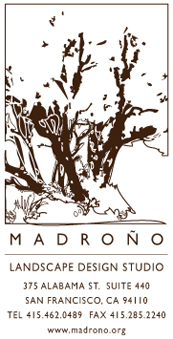 The well-groomed greenery of San Francisco's Golden Gate Park demonstrates the power of mankind to transform an uncultivated landscape into a recreational playground. Once a windswept wildland, these former sand dunes and occasional oak groves were staked out in the late 19th century by massive plantings of eucalyptus and monterey pine, thereby stabilizing the sandbank and forming the foundation into which horticulture could sink its roots. Great lawns and buffalo paddocks, rose gardens and tulip beds, an arboretum and a Japanese tea garden and a conservatory of flowers and more arose to meet the desires of a growing city and its park-loving public.
The well-groomed greenery of San Francisco's Golden Gate Park demonstrates the power of mankind to transform an uncultivated landscape into a recreational playground. Once a windswept wildland, these former sand dunes and occasional oak groves were staked out in the late 19th century by massive plantings of eucalyptus and monterey pine, thereby stabilizing the sandbank and forming the foundation into which horticulture could sink its roots. Great lawns and buffalo paddocks, rose gardens and tulip beds, an arboretum and a Japanese tea garden and a conservatory of flowers and more arose to meet the desires of a growing city and its park-loving public.
But hidden among these thousand-plus acres of manicured verdure, small pockets of the original native flora yet live. Consider the sanctuary of Strawberry Hill, a natural knoll in the center of man-made Stow Lake, where an old oak woodland draws upon ancient strands of history even as the modern age encircles it with tourist-driven paddleboats.
The hill takes its name from the wood strawberry, Fragaria vesca, which once grew here in vigorous plenty. Alas, it has been largely displaced by cape ivy and iceplant, those vigorous weedy interlopers from South Africa -- yet careful scrutiny of these sandy slopes will reveal patches of Fragaria still clinging to survival. The botanical name derives from the Latin for "fragrant," and indeed the smell of wild strawberry foliage is delightful, especially right after a rainshower. Similar in habit to its agricultural cousin, but with smaller fruit and a high tolerance for summer drought, the wood strawberry thrives in the partial shade of forests throughout the Bay Area, a natural choice for San Francisco gardeners seeking a good groundcover for underneath oaks or in otherwise sun-challenged yards.

